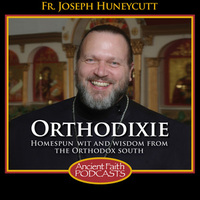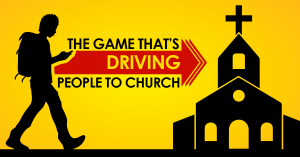Although distinct from one another, faith and psychic health are not necessarily incompatible.
Is it possible to marry the disciplines of Pastoral Counseling and Psychotherapy? I believe it is, for God has dominion over all. Since I currently have a secular job at a recovery center, the struggle between the two disciplines, if you will, is ubiquitous. The following reflection speaks to this struggle, somewhat, and was originally presented to clergy. It has been edited for the purposes of this Blog and, unfortunately, has lost the footnotes.
The importance of faith is not that it leads (or fails to lead) to psychic health. Such a view would imply that there is some value higher than faith (namely, psychic health) that faith must serve.
The main difference, other than faith, is often in vocabulary. I once took a graduate level course in counseling from a local university. It was an intense but satisfying experience. When it came time to speak, however, I had to change my vocabulary. This was awkward — not impossible. The demons and diagnoses have different names. The most difficulty comes in reconciling secular and heavenly cure. It seems to me that psychotherapy is helpful in finding the symptoms of the illness, whereas Orthodox Spirituality is better able to offer a cure through its incarnational theology. By “incarnation” I refer here to this mystery in its totality — not merely as a reference to the God-Man Jesus. What I am referring to is the healing properties of the holy mysteries, the sacraments of the Church.
In Deborah van Deusen Hunsinger’s book, Theology & Pastoral Counseling, she offers the case of “Eva”. As I read this case, I was amazed at how closely it resembled the story of a parishioner. “Betty” was in her mid-40’s; married with four children. She suffered from anorexia, hyperventilation, panic and other nervous disorders. This was not known by the rest of the parish — at least not directly. Therefore, it often caused some rather sticky problems for both priest and others when Betty’s odd behavior kicked in. She would “drop the ball” on hospitality (coffee hour)and/or show up for Liturgy dressed like a homeless person. She would mix her bedeviled emotions of the moment with a perfectly smooth situation, causing gossip and havoc. It was almost as if she were possessed.
In the case of “Eva” we meet a woman who has similar demons that stem from her childhood and her relationship with her mother. Eva’s symptoms correspond to the description of dysthymic disorder:
1. insomnia or hypersomnia
2. low energy level or chronic tiredness
3. feelings of inadequacy, loss of self-esteem, or self-depracation
4. decreased effectiveness or productivity at school, work, or home
5. decreased attention, concentration, or ability to think clearly
6. social withdrawal
7. loss of interest in or enjoyment of pleasurable activities
8. irritability or excessive anger
9. inability to respond with apparent pleasure to praise or rewards
10. less active or talkative than usual; feels slowed down or restless
11. pessimistic attitudes toward the future, brooding about past events, or feeling sorry for self
12. tearfulness or crying
13. recurrent thoughts of death or suicide
As I read this — and the rest of Eva’s case — I did so with my jaw agape. This was Betty! What a find! I believed, and it was later confirmed, that Betty’s experience and Eva’s were similar in the following regard:
Like her parents, God was perceived to be disappointed in Eva’s inability to ‘pull herself up by her bootstraps’. Like them, God was understood to be sick to death of her complaints and disgusted with her sniveling self-pity. Thus God, too, became an inner attacker, not a place of refuge and hope (p.161).
During our next session of spiritual direction, I mentioned to her that I had read something that might help us to overcome some of her anxieties. I told her that it was more psychology than theology — but if she was agreeable, we’d take a look at it. After some hesitation, she agreed. I told her about Eva, her symptoms and the roots of her case. I then read her the above list of symptoms for dysthymic disorder. She shrugged and said, “Yeah, that could have been me several years ago”. I told her that “during a depressive episode, at least three symptoms need to be present” (p.155). She said that was currently true. The remainder of our session was in talking about the “roots” of her own case. It was amazing how they mirrored the case of Eva! Betty called me the next day and apologized for being dishonest. It seems that the list of 13 was right on the money. She saw herself in almost every single symptom. [However, this insight may be built into the “disease”!]
Anyway, I explained to her that this gave us a starting point for future discussions and cure. She was fearful of “psycho-babble”, so I told her we wouldn’t use that vocabulary. However, the resources that are available for diagnosis in this regard can only help us in spiritual direction. The use of such “secular” tools is particularly helpful when the demons have convinced someone that God is the enemy.
Our goal in counseling is no different than the ultimate goal for all Orthodox Christians “deification” or “divinization” (theosis). As Katherine Marie Dyckman and L. Patrick Carroll state:
As a director we are not just enabling people to reflect upon and integrate life, as a good counselor would do, but to do so in the light of who they are called to become in fidelity to the Gospel. This … is the distinct and decided difference between counseling and spiritual direction.
The word “psychotherapy” literally means “healing of the soul”.
Even as a confessor, the priest is mainly a therapist. The sacrament of confession is not simply a formal absolution, especially of the Western type, as if God were angry and demanded expiation. It is something more. It is a part of the therapeutic treatment.
The director must make it clear that while he certainly stands against the directee’s sin, he nevertheless stands with him as a person.
Thus, having come to oneself and then proceeded on to repentance and reconciliation, the next step in the process is communion. As stated earlier, the goal of Orthodox spiritual direction (therapy) is theosis. It is a life long process which involves:
1) coming to oneself
2) confession
3) communion
“Communion” basically means “common union” with God and humankind. This is impossible without first gaining self-knowledge and then ridding oneself [continually] of sins and passions through confession. Communion is never fully completed in this life — neither are the first two steps coming to oneself and repentance. Rather, this is the lifelong path that one treads toward deification, theosis. In this earthly life, we never “graduate” from therapy or spiritual direction. We just proceed from “glory to glory” toward the likeness of God.
For this reason, I believe the cure is found in the Faith. Yet pastors can find some handy tools in the sciences of the mind, behavior, and human consciousness.
NOTE: Though it’s sometimes muddy and slow going, I highly recommend Metropolitan Hierotheos Vlachos’s book, Orthodox Psychotherapy.











